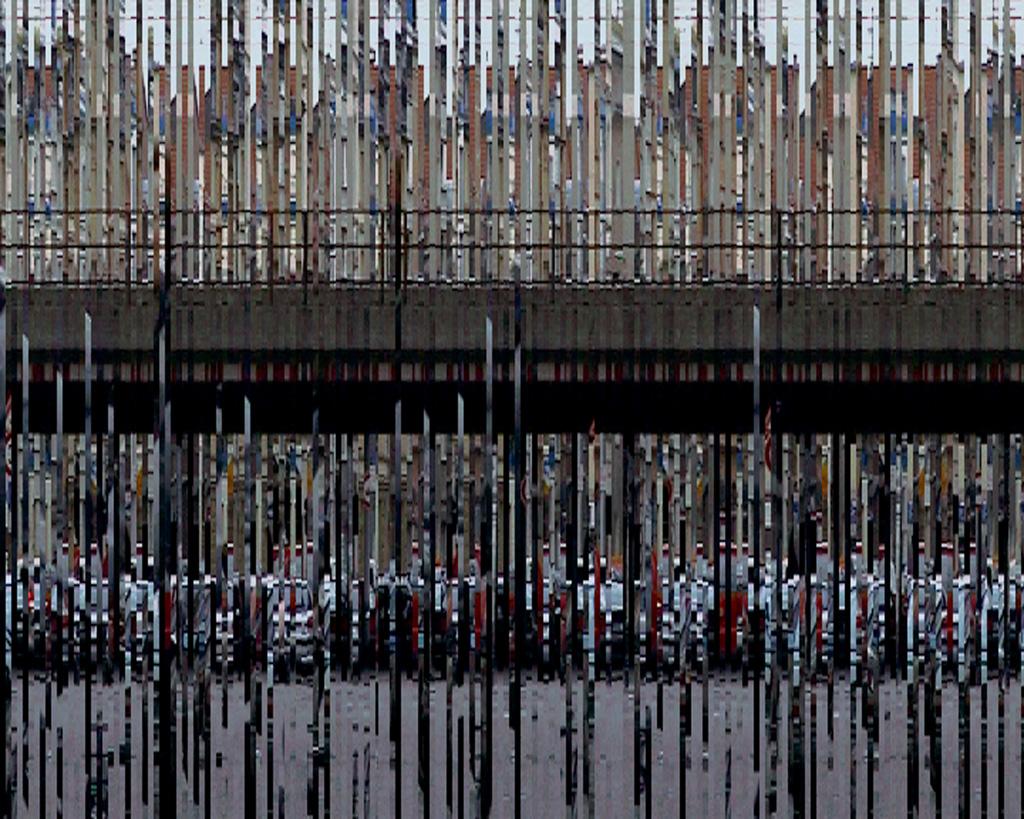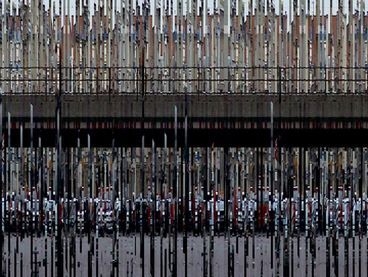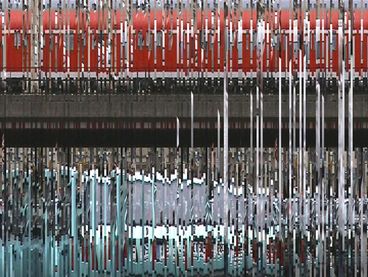MOOZ – audiovisual arts collection
Eigelstein
2006, 3:40 min., silent, color
Direction: Daniel Burkhardt
Advisors: Prof. Matthias Müller, Prof. Peter Zimmermann, Prof. Siegfried Zielinski
Production:Academy of Media Arts Cologne
In Eigelstein the image of an urban street scene fractures into thin vertical fragments. The outer form of the objects disintegrates and the chance of recognizing them is limited. This shifts the focus of perception: the rhythm and color of the images come to the fore, yet the fragmentation does not remain static, it is subject to change. The movements of vehicles and passersby modulate the temporal structure of the pictorial space: while they are themselves merged into a single uniform visual impression, other objects dissolve again into fragments.
For Daniel Burkhardt visual perception is a discontinuous process, in which seeing and not-seeing are mutually dependent. The human brain makes use of a certain abstraction: forms are selected, the already known categorized and matched together with new groupings. In this way inevitably blind spots appear. Tracing this myopia is an important principle for him. As a starting point for gathering material for his videos Daniel Burkhardt uses primarily documentary footage from his private archive, which he sees as a system for structuring and remembering. Most of his source images are created in passing: on walks, excursions, and travels. In Eigelstein the source image is a street scene with automobile and train traffic in the midst of the inner city of Cologne. For the artist, images that are as unspectacular as possible but not unknown are actually of the most relevance. Thus the changes that later occur in the images in the editing process are easier for the viewer to perceive. It is paramount for him that a visual interest forms through the selection of motif, point in time, duration of the footage, framing, and camera movement in the moment of recording. Here emerges an initial fascination for him, a moment of clarity and contact with the surroundings of an image that acts as a guide in postproduction.
After selecting a source motif, its documentary character is expanded into the fantastic, fictional, and subjective in its formal treatment. The main parameters of the intervention are the spatial and temporal continuum of the image. It is digitally fragmented, duplicated, interlaced, repeated, and shifted. The resulting formal structures develop out of a repeated feedback process between formal intervention, close inspection, and repeated intervention. This feedback loop is similar to a dance, in the midst of which stand the potential of the image and the perception of the artist. These successive formal interventions soon unearth structures of movement as well as form and color correlations that were previously invisible. In the final video the source material is visible and simultaneously recedes into the background of the editing. Only a strict balance of both sides allows something new to unfold. For Daniel Burkhardt creating moving images that allow our own perceptions to manifest is a fundamental concern. The impulse in this direction must of course be triggered on its own in the viewer of the video images. The attention of the viewer and the site of viewing play an important role in this process.
Daniel Burkhardt was born in 1977 in Bochum. He lives and works as a freelance artist in Cologne.
www.danielburkhardt.de
Undergraduate studies at the Academy of Media Arts, Cologne, from 2002 to 2007. Degree projects include his video work CTG KEEPS COOL, Eigelstein, and the series Rauschen & Brausen I–IV in the media art department.








